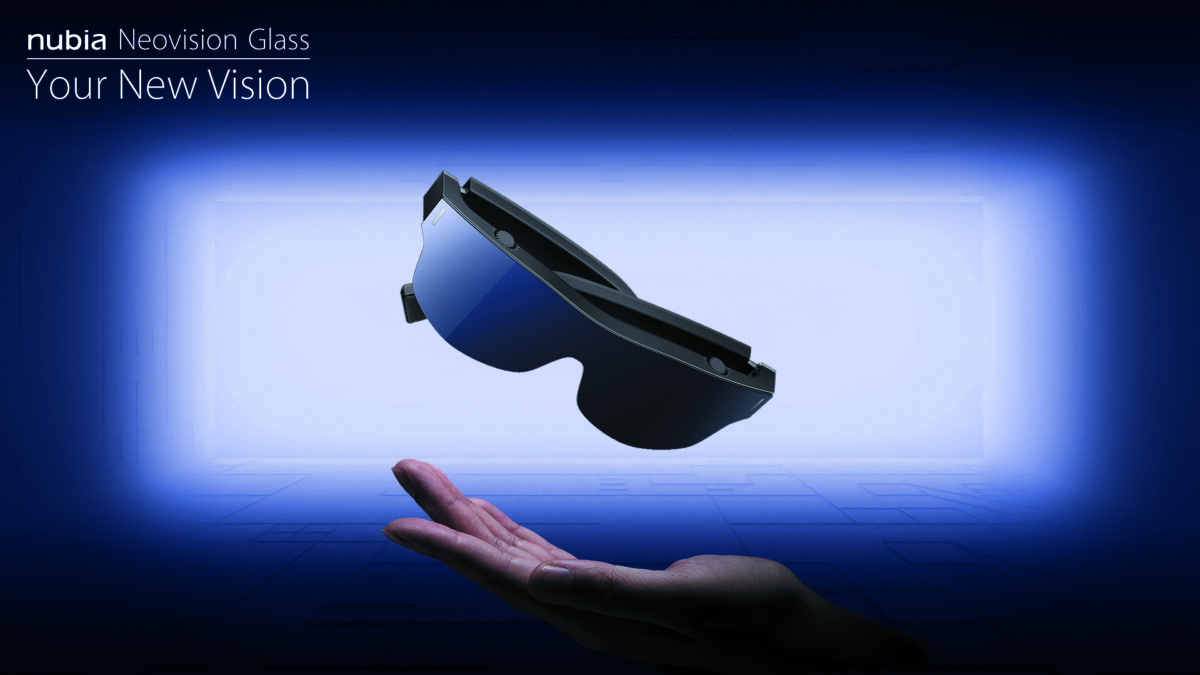Nubia, a Chinese company long associated with the ZTE group, has launched the Neovision, AR glasses focused on virtual reality. Weighing only 79 grams, these glasses offer the equivalent of an external screen for watching content on small micro-OLED screens.
The immersive technology sector was invigorated by the launch of the Apple Vision Pro. Coming from the American tech giant, the Vision Pro is a bold bet on the potential of mixed reality. With the Apple Vision Pro headset, the Apple firm is resolutely committed to mixed reality, a market that is already booming. The potential of this technology, which merges virtual and real elements to create a unique user experience, is captivating. Apple’s popularity, reputation for excellence, and ability to create consumer products could propel the mixed reality market to new heights. But not only that, it can also give a boost to the virtual reality market.
At the same time, Nubia, a Chinese company long associated with the ZTE group, unveiled an interesting product, AR glasses. Nubia Neovision. The latter do not offer augmented reality strictly speaking, but rather a form of virtual reality, intended for the display of content on small micro-OLED screens.
An external screen in glasses
The key takeaway from Nubia Neovision is that it works like a true external display, creating a virtual reality bubble that isolates the user from the outside world. With no passthrough mode – a feature that in other devices sees the real environment while interacting with virtual elements – these glasses engage the user in complete immersion. Real-world distractions are brushed aside, giving way to an enveloping digital environment, like watching a giant 120-inch screen solo.

Weighing only 79 grams, these glasses can connect to a multitude of devices – an Android smartphone, a MacBook, a Sony PlayStation 5 – and serve as a remote screen. Thanks to their two Full HD micro-OLED screens, the Nubia Neovision can project a virtual 120-inch screen, offering a 43-degree field of view and a maximum brightness of 1800 nits. At 549 euros, there are certainly more efficient options, but the quality-price ratio of this product remains interesting.

Connection to the various devices is via a USB-C interface with support for DisplayPort Alt Mode (DP Alt Mode). This includes some Android smartphones, Apple’s MacBook Air, or even consoles like the Nintendo Switch and PlayStation 5 via an HDMI to USB-C adapter. The confusion around USB-C DisplayPort is that not all USB-C ports have DisplayPort Alt Modeit is therefore necessary to check the characteristics of your product.
These glasses seem particularly ideal for watching videos, playing games, but also for working. They also have another interesting feature for a certain audience: an integrated myopia correction, thus allowing people with this vision disorder to use them. Available in France, Belgium and many other European countries, the Nubia Neovision seem well positioned to attract an audience ofearly adopters.
So, it is important to remain attentive to the question of autonomy, a major challenge for this type of product. VR glasses, like any mobile electronic device, depend on their ability to operate for an extended period of time without recharging. As for using USB-C for video transfer, it’s an interesting approach that offers a wide range of possibilities. However, it would have been nice to add a wireless option for greater flexibility of use. Admittedly, wireless solutions already exist on the market, but they remain complex to implement and not easily accessible.
Do you use Google News (News in France)? You can follow your favorite media. Follow Frandroid on Google News (and Numerama).
